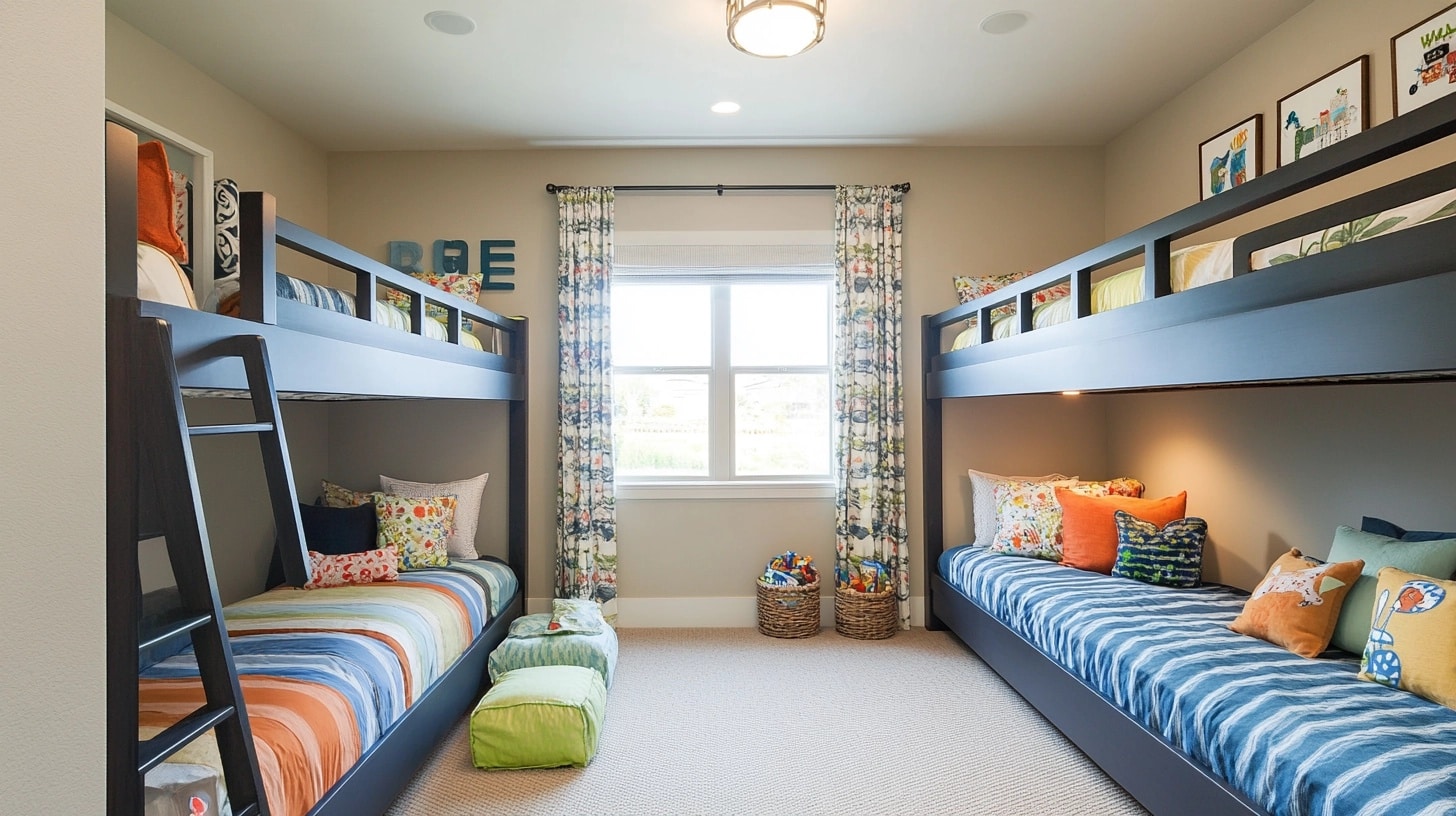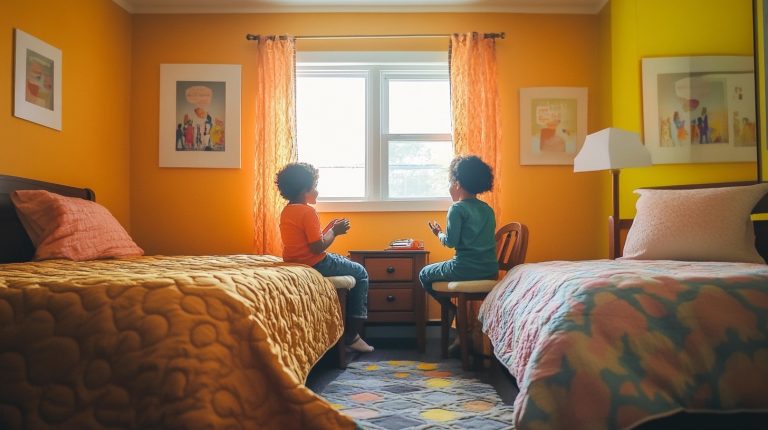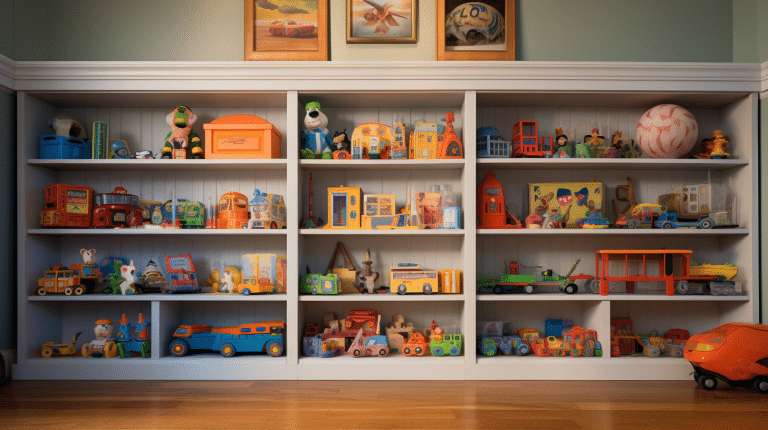Having kids share a room is becoming more common these days.
Many families pick this option due to small homes or high housing costs. But there’s more to it than just saving space.
When siblings share a room, they often build stronger bonds and learn important life skills like sharing and respect.
This guide will help you set up a shared room that works for your kids.
We’ll cover simple tips to handle common issues and make the space work for everyone.
From setting clear rules to creating personal space, you’ll find practical ways to make room-sharing a good experience for your children.
The Right Age to Share a Room with a Sibling
As doctors suggest, babies need to sleep in their parents’ room for at least six months.
This keeps them safe and makes night feeds easier.
For older kids, there’s no perfect age to start sharing – it depends on how they act and what they need.
Most kids can start sharing a room between ages 2 and 6.
By this time, they will have slept through the night and understood basic rules.
Watch for signs that show they’re ready, like following bedtime rules and playing well together during the day.
Things to do When Sharing a Room with a Sibling

Setting up a shared room takes careful planning. These steps will help make the switch smoother for everyone involved.
1. Organize Their Room
Split the room into clear sections for each child.
Use bed placement, storage bins, and shelves to mark personal areas. Pick beds that save space.
Bunk beds work great for older kids, while twin beds against different walls suit younger ones.
Consider study areas, too.
Add desks or small tables where each child can do homework or play.
Label storage boxes and drawers so everyone knows where their things go.
2. Plan Things Beforehand
Talk to your kids about sharing a room before making changes. Listen to their worries and ideas.
Let them pick some items for their space, like bedding or wall art.
This helps them feel good about the change. Show them how the room will look.
Draw a simple map or move some furniture around while they watch.
Answer their questions and stay positive about the new setup.
3. Choose the Right Time to Make the Change
Pick a calm time for the switch. Avoid big life changes like starting school or moving houses.
Summer breaks often work well, and kids have time to get used to sharing without school stress.
Watch your children’s moods and health.
If someone has sleep troubles, wait until things get better. A smooth start makes sharing easier.
4. Set Bedtime Rules
Make clear rules about bedtime behavior. Set quiet times when talking stops.
Agree on using nightlights or music. Teach kids to whisper if they wake up early.
Please write down the rules together and put them where everyone can see.
Include what to do if someone can’t sleep or needs help at night.
5. Always Have a Backup Plan
Keep a spare sleeping spot ready, like a fold-out bed or couch.
Sometimes, kids need space alone, especially when they are sick or going through tough times.
Think about where each child could sleep if needed.
Maybe one can stay with grandparents or briefly stay in another room.
6. Understand Individual Sleeping Needs
Some kids need more sleep than others. Young ones might go to bed earlier.
Light sleepers might need extra quiet. Learn what helps each child sleep well.
Watch how your kids sleep. Notice when they get tired and what bothers them.
Change bedtimes if needed to match their natural sleep patterns.
7. Set a Bedtime Routine
Create a simple routine both kids can follow. This might include putting on pajamas, brushing teeth, and reading a story.
Keep the steps the same each night. Time each part of the routine so kids know what comes next.
Give warnings as bedtime gets closer. This helps everyone wind down together.
8. Napping in Separate Rooms
Let younger kids nap in quiet spots away from the shared room.
This gives them better rest during the day. Use living rooms or parent bedrooms for nap time.
Keep nap spots dark and quiet. Use white noise if needed.
This helps kids sleep well without bothering others.
Benefits and Drawbacks of Sharing Rooms
Benefits
- Kids learn to share space and belongings naturally
- Brothers and sisters form closer bonds through daily interaction
- Children develop better social skills and patience
- Kids learn to respect others’ space and belongings early
- Parents save money on home costs and furniture
- Children feel less lonely at bedtime
- Siblings learn to solve small problems together
- Kids become more flexible about schedules and routines
- Young ones often feel safer with older siblings nearby
- Children learn to be considerate of others’ needs
Drawbacks
- Different sleep schedules can cause tension
- One child might wake up when the other makes a noise
- Harder for kids to have private time
- Studying or homework might be difficult with distractions
- Bedtime routines take longer with multiple children
- Sickness spreads more easily between siblings
- Arguments about personal space might increase
- Storage space becomes more limited
- Older kids might feel they lack independence
- It is hard to host friends without bothering the other sibling
Conclusion
Room sharing needs good planning and clear rules to work well.
This guide gives you practical steps, from timing the change to setting bedtime routines.
You’ve learned when kids should start sharing, how to set up their space, and ways to handle common problems.
The key is staying flexible. Watch how your kids adjust and change things if needed.
Some days will be harder than others but stick to your rules.
Your children will learn to share their space well with time and patience.
Now, you have the tools to make room-sharing work for your family.
Frequently Asked Questions
What age can a brother and sister share a room?
Brothers and sisters can share a room until age 10. After that, they need separate rooms to respect privacy and personal space during puberty.
Does a child with ADHD need their own bedroom?
Children with ADHD often do better with their own room to limit distractions and help them sleep. But they can share if the room is well-organized with quiet spaces.







